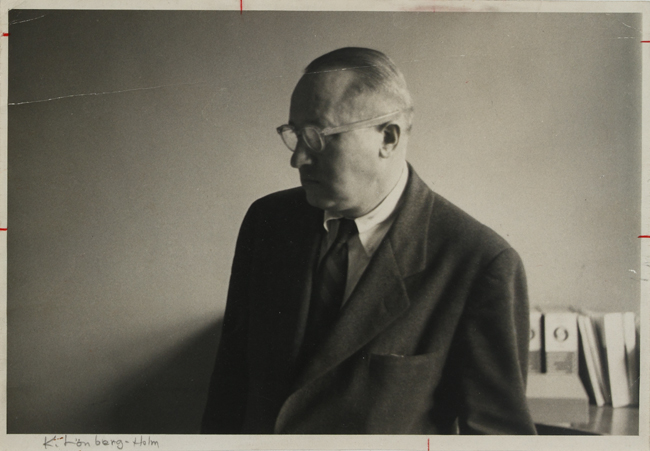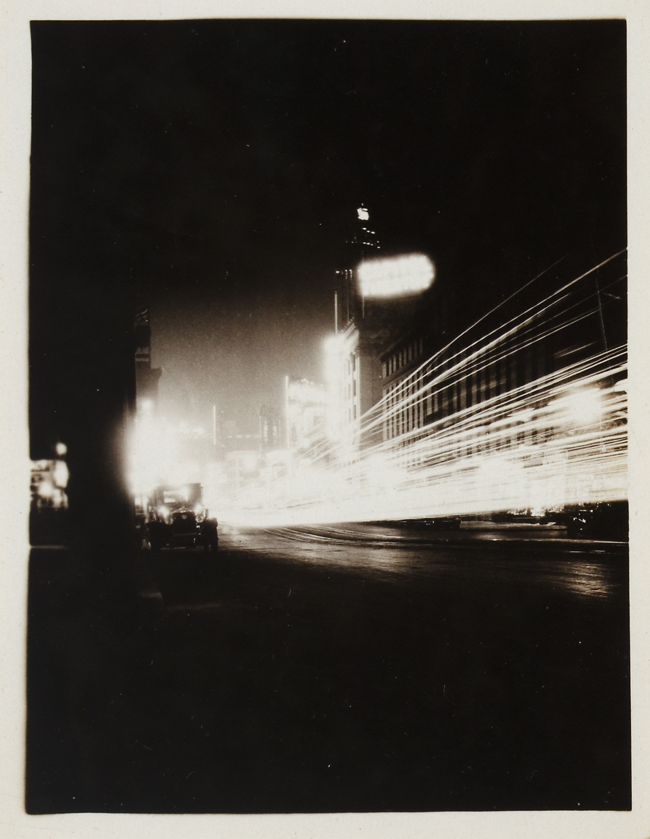
May 22, 2014
First Look: Knud Lonberg-Holm, Modernism’s Long-Lost Architect
Preview our exclusive June feature of this influential, but “invisible” designer.

Knud Lonberg-Holm (1895-1972), a criminally overlooked but highly influential Modernist architect, photographer, and pioneer of information design
Knud Lonberg-Holm Archive from the Marc Dessauce Collection, all images courtesy of Ubu Gallery, NY
The following text is an excerpt from the cover feature of Metropolis’s upcoming June issue. The story, “The Invisible Architect of Invisible Architecture,” by editorial director Paul Makovsky, is an exclusive look at the life and work of the forgotten Danish-American architect Knud Lonberg-Holm. Just try Googling him.
At the height of his popularity, R. Buckminster Fuller, the visionary inventor best known as the father of the geodesic dome, was on a mission. Whether at a conference at the American Society for Metals in 1958; in guest editorials in Saturday Review, Newsweek, or the planning journal Ekistics in the 1960s; or in an interview in the popular magazine House & Garden in 1972, Fuller repeatedly referred to his great friend, the architect Knud Lonberg-Holm—a “really great architect of the Nysky (New York skyscraper) age”—whom Fuller said “has been completely unrecognized and unsung,” and whose “scientific foresight and design competence are largely responsible for the present world around the state of advancement of the building arts.”
Fuller’s indebtedness to his “unsung Leonardo of the building industry” went back to when they first met in 1929 to talk about the idea of producing “invisible architecture.” Lonberg-Holm believed that invisible buildings directly contradicted Louis Sullivan’s classic “form follows function” and that because of improvements in chemical alloys, the dimensions of any given structure could be reduced while its strength increases. In other words, “builders are able to do more with less.”

Lonberg-Holm’s unsubmitted design entry to the 1922 Chicago Tribune Tower Competition, which was later published by Walter Gropius and praised by the likes of Le Corbusier

A design (1926) for a home in Ann Arbor, Michigan
In fact, Lonberg-Holm told him that “the really great architect will be the architect who produces the invisible house where you don’t see roofs or walls,” Fuller explained in House & Garden. “I’ve thought about this, thought about it a lot, the ultimately invisible house—doing more with less and finally coming to nothingness.” This concept led naturally to Fuller’s famous question: “How much does your building weigh?,” something that high-tech sustainable architects like Norman Foster and Richard Rogers espouse today as a basic part of their building practice. Fuller even corresponded with Lonberg-Holm in 1963 about writing a book on him—which he called Lonberg-Holm, Archetype of the Invisible Architects of the Invisible Architecture—saying, “The urge to do this task is powerful within me and I hope to live to complete it and you too read it.” This letter, as well as other articles and documents between Fuller and Lonberg Holm are just a small but important part of a remarkable archive assembled by Marc Dessauce, a scholar who was working on the role of Lonberg-Holm in the creation of a distinctly modern American architecture, and who unexpectedly died in 2004 before completing his dissertation.

Seventeen of Lonberg-Holm’s photographs appeared uncredited in Erich Mendelsohn’s hugely influential 1926 book, Amerika: Bilderbuch eines Architekten.

High-tension power lines were, for Lonberg-Holm, a good example both of “invisible architecture” and “doing the most with the least.”
Now the work and career of this overlooked, yet highly influential, 20th-century Modernist is the subject of a new exhibition, Knud Lonberg-Holm: The Invisible Architect, on display at the Ubu Gallery in New York through August 1, 2014. The exhibition traces the career of the architect, photographer, author, researcher, and teacher, beginning with his early work in Denmark and Germany, which connected him to the Bauhaus and De Stijl groups during the 1920s. It provides the first comprehensive view of his later work, between 1932 and 1960, where, as director of research for Sweet’s Catalog Service, the clearinghouse for catalogs selling common and arcane building, electrical, and construction supplies to the architectural trade, Lonberg-Holm revolutionized the architectural-building catalog system. Along with Czech-American graphic designer Ladislav Sutnar, he created a theory and system for applying Modernist ideas and standardizing the ways of finding information—a systemized approach that ultimately pioneered information design.

An information diagram mock-up from Development Index, a project by Lonberg-Holm and C. Theodore Larson which took a systems-thinking approach to data collection and organization.





